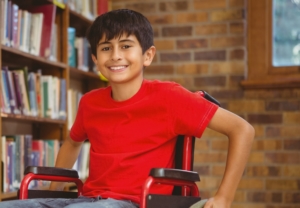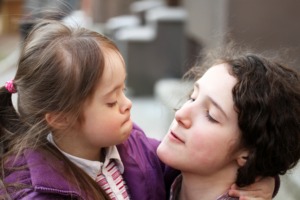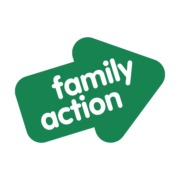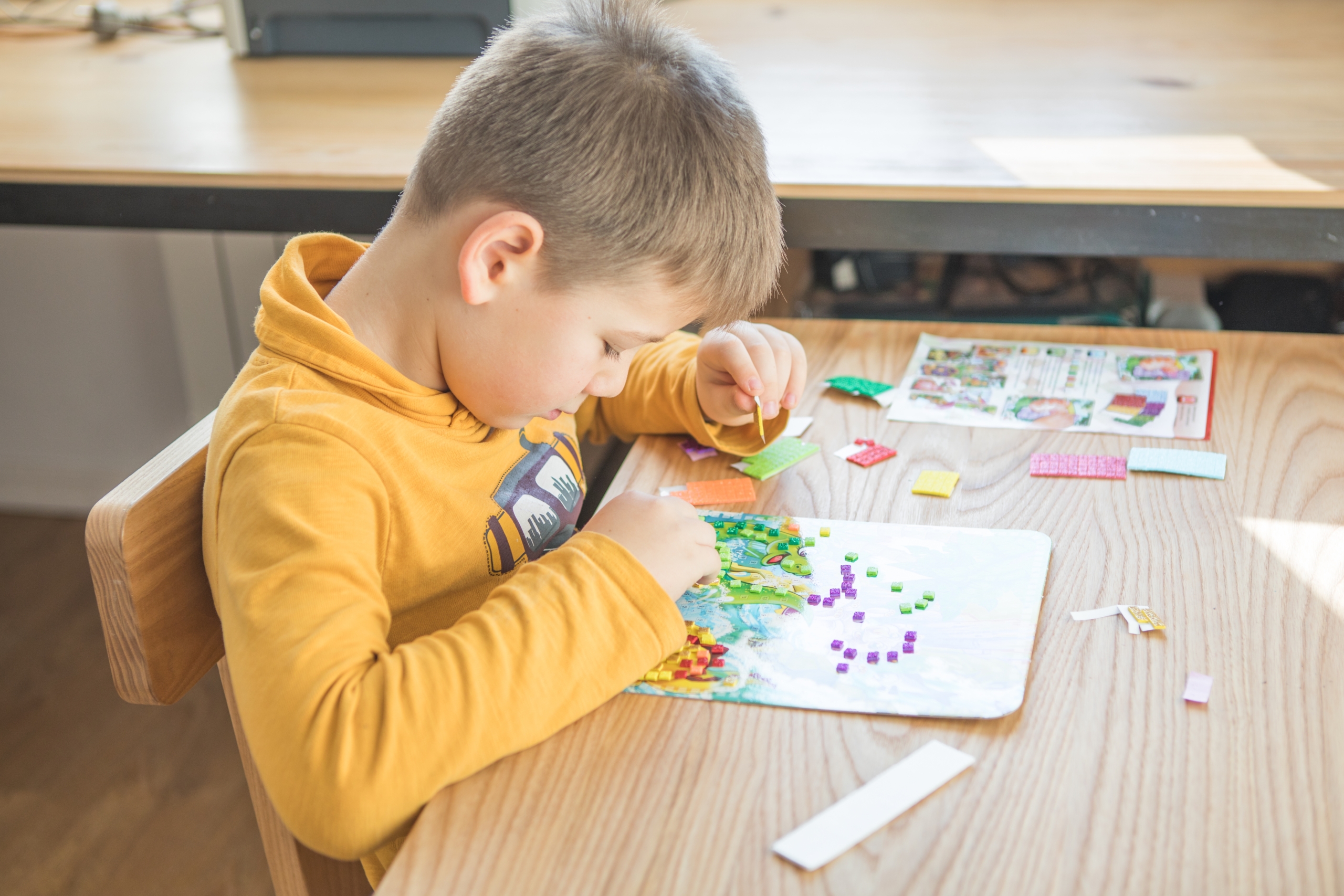Our Special Educational Needs and Disabilities experts, who work within Family Action services, have come together to provide a few points that might help you manage the return to school with your peace of mind intact.
Returning to school after the summer holidays can be difficult for any child. The vast majority of children will be moving between year groups, with some changing schools – but this year all of them will do so in a world where their daily routine will have changed significantly due to Covid-19.
It’s a situation that would create anxiety for any child, and children with special educational needs and disabilities (SEND) often experience additional challenges. These challenges can relate to change, new – possibly unfamiliar – environments and routines, unpredictability and the making of new relationships and connections. That’s why we’ve spoken with our experts, who work within Family Action services, to suggest a few points that might help you manage the return to school with your peace of mind intact.
Give yourself a break
All the points we’ve mentioned above make for a difficult situation for any parent or carer to navigate, so there’s no shame in feeling slightly overwhelmed. Our Small Steps service in Nottinghamshire, which provides support to children with SEND and their families, says many parents undervalue their own experience and strength.
Family Support Worker Keely said: “Parents sometimes forget that they’ve handled challenging situations before. They tend to move onto the next milestone without taking the time to think about what they’ve already achieved. I would suggest to all parents and carers that you stop and reflect on the problems you’ve resolved before – you’ll soon realise how expert you already are!”
 Check what’s in place
Check what’s in place
Most schools should have procedures in place to manage the transition from one class or school to another and should have explicit plans for supporting pupils with SEND. These might include talking to you, connecting you to specific members of staff or support services or hosting activities to prepare children for what’s happening.
Due to our current situation, these might be in a slight state of uncertainty compared to pre-Covid, but you should definitely communicate with your child’s school (or new school), to find out what support is available and possibly arrange a meeting, (in-person or otherwise), with the key staff involved with your child.
The write approach
All the Family Action experts consulted for this blog agreed on the importance of having a document describing your child’s personality, likes, dislikes and behavioural triggers, which you can share with the school. In some cases, you may already have an Education, Health and Care Plan (EHCP) which you can share, but if your child doesn’t have a plan you can use any document which outlines who your child is – these might have come from other health or social care organisations and are typically called “about me”, “my passport” or similar.
If you have none of these that’s fine. Just take a piece of paper and write out who your child is, any behaviours the school needs to know about and any challenges that might come up. The teachers will be grateful for the effort you’ve made as it helps them to get a head start in supporting your child in the best way possible.
Our Helping Hands service in Sandwell, is a befriending service for parents of children with additional needs, which helps parents produce transition documents like these. Helping Hands Service Manager Sam said: “It might seem like it’s just a piece of paper, but it helps the teacher know what the individual child’s triggers for a change in behaviour are and what strategies are in place to support them. It can be really helpful”.
Paint a picture
We’ve discussed how important producing an “about me” document for the school can be, but this exchange of information doesn’t have to be one-way. Some schools produce a social story for children with SEND – which is like a comic book or picture book showing key facts about the school day.
It might, for example, outline which gate your child should enter through, where their classroom door is, the school menu, or where the toilet is. It might even have pictures of key members of staff.
If your school hasn’t done one and feels they can’t do so when you ask, there’s nothing to stop you asking them if you can produce one yourself. Some schools will be perfectly happy to let you visit and take photos in advance, or provide you with images for a book of your own.
Even if this is not the case you might be able to use the discussion to get some of the key information regarding the timetable and the physical location to set your child’s mind at rest – such as, for example, being able to tell them that the toilet is right outside their classroom.
Walk the walk
It’s no wonder that transitions between schools and year groups can be loaded with anxiety. Your child may be joining a new setting and gaining a new teacher, new classmates and a whole different routine – particularly if they’re coming from primary school where they’ve been in the same class all day with the same teacher. It’s a big change which removes the safety involved in knowing what to expect, which can feel overwhelming.
Small Steps Senior Family Support Worker Belinda says this feeling of being overwhelmed gives us a clue to how to manage the change. Belinda said: “Start preparing the children sooner rather than later – start discussing the new term and practising the routine in small doses to avoid having to deal with it all in one go.”
“Communication is the key part of preparing them and settling the anxieties of the unknown.”
She adds: “That it’s important to be positive about the situation during these discussions and not let your fears as a parent become their fears. I would focus on the different elements of what could take place – for instance trying on school uniforms and having trial runs of the walk to school in the days leading up to the end of the holidays.Start getting into the routine you would be getting into if it were going to school, including going to bed and getting up at the times you would be during term time”.
Obviously, you risk generating anxiety by doing so but, Operational Manager Louise from Helping Hands suggests: “Breaking up the introduction of new routines into tiny chunks to keep them manageable. Communication is the key part of preparing them and settling the anxieties of the unknown.”
Additional Transition Days
When it was “business as usual” before Covid-19, all children would normally be given transition days to help them familiarise themselves with a new school environment, and children with SEND were often given additional days. Because of the virus, many schools have stopped these general transition days, but if you think that your child might need some additional support, it might be worth speaking with your child’s class teacher or Headteacher to see what can be done about organising a visit beforehand.
In certain circumstances, it might even be a good idea for the school to look into a phased return so your child isn’t overwhelmed. Even if you can’t secure additional transition days it might be that other adaptations can be made, such as early entry into class, or a relaxing of school uniform for those with sensory needs. Once again talking to your child’s school is the key. Remember, your child’s school and teachers want the best for them.
Think beyond the first day
Our Small Steps transition groups working with parents in Nottinghamshire meet with parents a number of times throughout the school year, and with good reason. Transition is ongoing and there’s no reason to assume that troubles that occur on the first day will continue throughout the year. The reverse is also true, however, in that we shouldn’t assume that everything will continue without incident just because we resolve the problems that occur on day one.
Small Steps Small Steps Senior Family Support Worker Belinda said: “Anything can happen and what a parent might think a child would worry about might never come up. It can be something completely different that they can’t communicate. Even adults struggle to communicate our worries sometimes, so how can we expect children to do so?”
Ensure you keep the lines of communication open with both your child and the school throughout the year to ensure no new issues have arisen, and speak to the school quickly if they do.
Don’t assume the worst
Parents and carers want the best for their children and are likely to want to step in and deal with anxiety as soon as it presents itself, but not all anxiety is necessarily problematic. Our Small Steps service says that occasionally parents worry about what appears to be anxiety in their children but then later find out they’re excited and don’t know how to process the complex feelings they’re experiencing.
Belinda added: “Again, I’d recommend going to look at the school and practising the routine. It’s like starting a new job… You don’t feel so bad when you turn up on the first day and see it for what it is.”
 Discuss the timetable
Discuss the timetable
Occasionally young people put pressure upon themselves to achieve and, in some cases, will not be happy unless they’re getting the best possible grade. On the other hand, some pupils will fear that they can’t possibly work at the level that will be expected of them and worry that they will struggle.
For this reason, it’s sometimes useful to speak to your child’s school and see if you can get samples of last year’s work so that your children can prepare appropriately and set their fears at rest. In some cases where children genuinely might struggle with the curriculum following a difficult transition, schools will consider a reduced timetable, but this is often seen as an option for exceptional circumstances.
A useful tip for scholars who worry
Our Helping Hands service has a useful tip for children who are prone to anxiety… keep them busy! Helping Hands service Manager Sam said ”Fiddle toys or something to occupy busy hands can really help distract young people and draw their attention away from worrying.”
“We’ve seen children use lumps of playdough, stretchy springy toys, blue tack… anything really – just something from around the home that they can focus on rather than worrying”.
Obviously, it’s worth discussing the function these items play with teachers at the school beforehand and check that they’re happy for your child to make use of them.
Speak to the experts
If you’re worried about your child starting or returning to school you might want to talk to someone who’s gone through this before. Most places in the UK have parent groups for children with Special Educational Needs and Disabilities, as well as distinct groups for autism, ADHD etc. who will be able to tell you what works for them.
By law, local authorities are required to produce something called a ‘local offer’, which is a directory listing the support groups in your area. There should also be a dedicated advice service called an IASS (Information, Advice and Support Service) to help you find support and information locally. An IASS is a great place to start with local advice and can also put you in touch with the REAL experts – parents and carers who’ve been through exactly what you’ve been through.
To find your local IASS you can visit the Information, Advice and Support Service network here.
Looking for some packed lunch inspiration? We have teamed up with Bacofoil who have created a week’s worth of colourful, tasty and nutritionally balanced lunchbox ideas for your little ones, all for under £5! Check out the recipes here.










